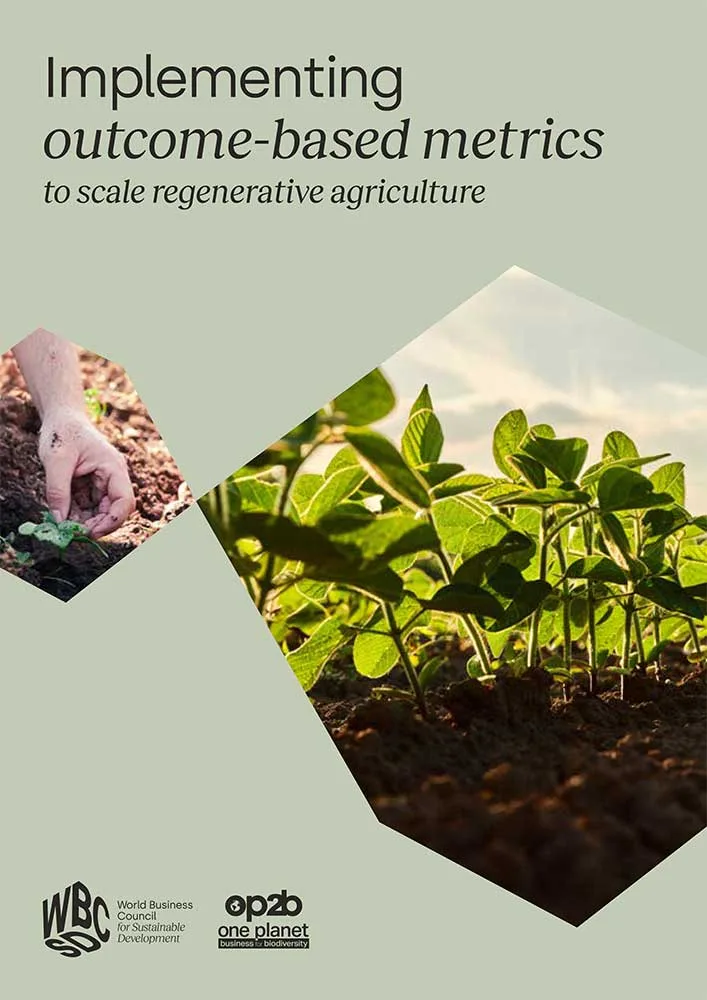Implementing outcome-based metrics to scale regenerative agriculture
Published: May 30, 2025

To limit global warming to 1.5°C, regenerative agriculture must scale from covering just 15% of global cropland today to at least 40% by 2030.1 To achieve this agri-food system shift, businesses must align on how to measure, report and support farmers in delivering environmental, social and economic outcomes.
This report assesses the publicly disclosed information of 38 leading agri-food companies. It reveals growing momentum: businesses have converged on a shared vision for regenerative agriculture, aligned on 11 outcomes, and are beginning to implement indicators and metrics that show sectoral uptake. These holistic outcomes represent best practice in adaptation and measurement according to local contexts and the indicators that go with them, all with the same imperative: avoid further conversion of natural ecosystems.
Aligned metrics support consistent corporate impact monitoring and reporting by linking to key sustainability frameworks and offering tools to enable data collection and standardization. They build trust and unlock finance by enabling shared measurement across stakeholders, helping valorize ecosystem services and de-risk investments. They strengthen the business case for resilient value chains by embedding environmental and social impacts into procurement and corporate strategies. Lastly, they foster value chain collaboration by aligning actors around shared goals – driving innovative finance solutions, offering technical assistance for farmers and scaling MRV (monitoring, reporting and verification) solutions.
These findings demonstrate why businesses, financiers, policymakers and other value chain actors need to align on outcome-based metrics for regenerative agriculture. Report insights also provide a blueprint for companies to take action to move from alignment to implementation.
Regenerative agriculture offers a pathway to future-proof agri-food systems amid growing material risks from climate change and biodiversity loss. To scale impact, companies must embed shared outcomes and aligned metrics across sourcing, innovation and investment strategies – turning commitment into action.
Total alignment vs implementation of regenerative agriculture outcomes, indicators & metrics

Footnote:
- Sustainable Markets Initiative (2023). Scaling Regenerative Agriculture Action Plan.